 |
 |
 |
|
|||
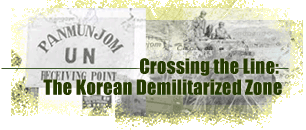
Crossing the Line: The Korean Demilitarized Zone I've signed a lot of liability release forms over the years in search of adventure and excitement. But the legal release to go into the truce village of Panmunjom tops them all.
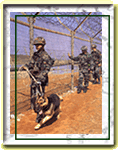
Well, what can you do? I sign my life away and then meet U.S. Army Private Clinton Nawara. Military escorts are assigned to all private tour buses. Private Nawara will point out the sights.
On the way to the actual front-line, our bus threads its way past minefields, tank traps and military garrisons. In between, you spot the occasional ginseng field and rice paddies. Don't be fooled by the term "demilitarized zone." This place bristles with troops, guns, barbed wire and fortifications. Soon, we pull up behind a cluster of guard towers and buildings with names like Peace House and Freedom House.
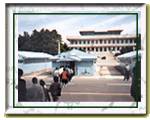
Here, Private Nawara leads the way into a familiar-looking conference building painted United Nations blue and issues a curious invitation.
So here goes. The border between north and south cuts right through the middle of the negotiation table in the middle of this room.
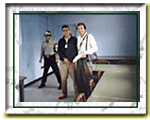
I only go about five paces into North Korea before hitting the back wall of the room, but now I can say I've been there. Didn't stick around though. Outside I saw the guards from South Korea strike fierce poses for the benefit of their northern counterparts who stand about 50 yards away. The intimidating looks from our side get no response. There's more going on at Checkpoint Three, an overlook a short distance to the east. In the bushes on the other side of the border, North Korea has set up giant loudspeakers to blast music and propaganda at the south.
White lettering runs across the hillsides opposite us, kind of like the Hollywood sign above Los Angeles, except it's in Korean.
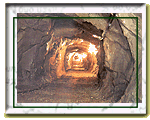
South Korea has put up its own giant signs. One behind me translates, "Come to a better place to live." Another one I didn't see reportedly reads, "We have ten million cars." Through binoculars it's hard to spot cars or much activity of any kind in the north. Later, over lunch in the military mess hall, I learn the Cold War scene makes a strong impression on my fellow travelers. Many of the Americans visiting are related to someone who fought in Korea.
The easing of sanctions against North Korea by the United States this fall has lowered tensions somewhat. Still, there are ample reminders of the latent hostility. The most interesting are the infiltration tunnels north Korea has dug under the DMZ. South Korea and the U.S. have discovered four. Tourists are allowed into the tunnel closest to Panmunjom. The interception shaft the South Koreans dug slopes steeply down... it joins the north Korean secret passage about 200 feet below the surface.
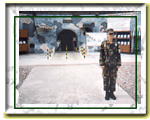
The section the North Koreans drilled is wide. Invaders could've marched three abreast into the south had the tunnel been completed. I walk in the direction of the enemy until I meet two guards bearing machine guns. They're south Korean soldiers whose unlucky assignment is to peer into the blackness behind the underground border. This is one exploration you definitely don't want to try if you have claustrophobia or weak lungs. After returning to the surface, you'll want something to drink...and how better to refresh after a day on the front line than to sip fresh mineral water from the unification fountain. It's conveniently right next to the tunnel. Mmm... I feel unified already. A daylong tour of the DMZ and the infiltration tunnel will cost you the equivalent of about $70. You'll need advance reservations, to bring your passport, and to dress decently. No jeans or messy hair-dos are allowed, so no North Koreans can snap pictures of sloppy, unkempt capitalists to use in propaganda. In Panmunjom, I'm Tom Banse for The Savvy Traveler.
|
 | American Public Media Home | Search | How to Listen ©2004 American Public Media | Terms of Use | Privacy Policy |